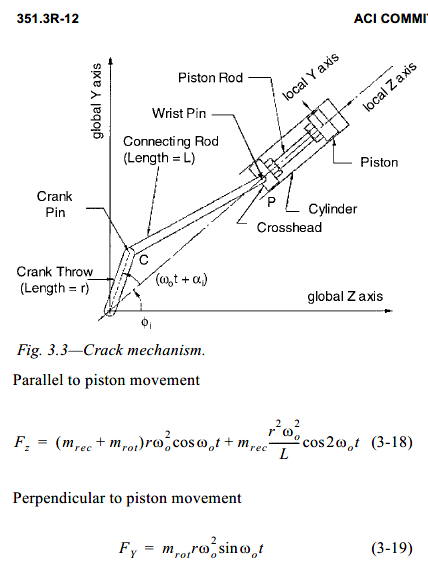SouradeepGuha
Structural
Hi,
I was going through the Design of Structures and Foundations for Vibrating Machines by C. Arya and O'Neill.
I found the solved example of a vertical reciprocating compressor fdn but couldn't understand the force direction which should be perpendicular to piston movement. In the attached fig. from the book. Fz is the direction of forces along the piston as it is a vertical compressor.
Now, as the axis of crank shaft and motor is parallel to X axis shouldn't the direction of the perpendicular force be along Fy and not Fx as depicted in the example. No force should be acting along the direction of the shaft.
Is this an errata in the book or am I missing something.
I sincerely apologise if you find the question silly but kindly help.
-Soura
I was going through the Design of Structures and Foundations for Vibrating Machines by C. Arya and O'Neill.
I found the solved example of a vertical reciprocating compressor fdn but couldn't understand the force direction which should be perpendicular to piston movement. In the attached fig. from the book. Fz is the direction of forces along the piston as it is a vertical compressor.
Now, as the axis of crank shaft and motor is parallel to X axis shouldn't the direction of the perpendicular force be along Fy and not Fx as depicted in the example. No force should be acting along the direction of the shaft.
Is this an errata in the book or am I missing something.
I sincerely apologise if you find the question silly but kindly help.
-Soura

